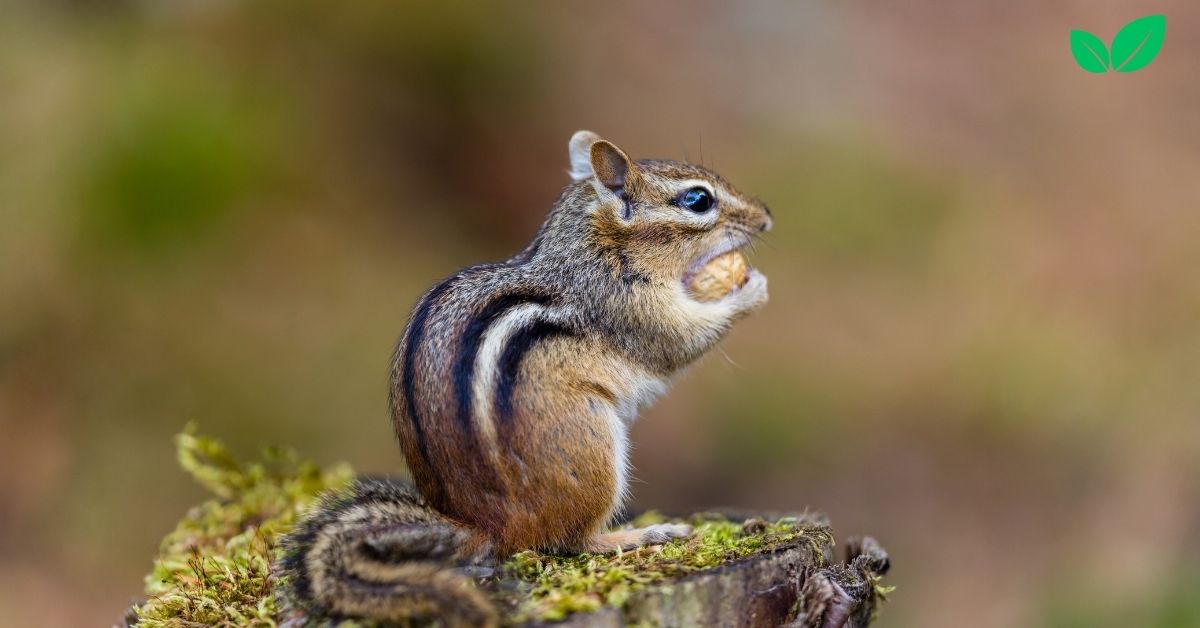Chipmunks, those small, striped rodents scurrying across forest floors, gardens, and backyards, play a vital role in their ecosystems. One often-overlooked aspect of their presence, however, is their droppings. Chipmunk droppings are not just waste—they contribute to soil health, serve as environmental indicators, and even influence the transmission of certain diseases. By understanding chipmunk droppings and their ecological role, we can better appreciate how these tiny animals impact their surroundings.
In this article, we will explore the importance of chipmunk droppings, their potential environmental benefits and risks, and how they interact with both natural ecosystems and human-modified environments. We will also examine the ways in which chipmunk droppings can serve as indicators of local wildlife health and offer guidance on managing chipmunk populations in human-inhabited areas to minimize negative environmental impacts.
1. What Are Chipmunk Droppings?
Chipmunk droppings are the small, pellet-like feces left behind by these rodents as they forage and move about their habitat. Similar in appearance to mouse droppings, chipmunk droppings are typically dark brown or black, with a slightly elongated shape measuring between 1/4 and 1/2 inch in length.
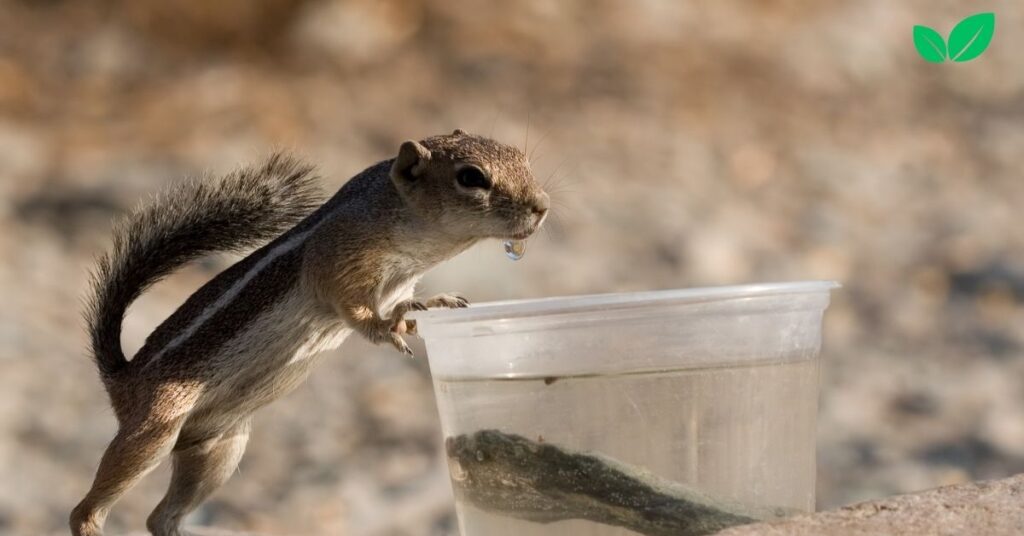
1.1. Physical Characteristics
Identifying chipmunk droppings is key to understanding their role in the ecosystem. While they are often mistaken for the droppings of other small mammals, certain distinguishing characteristics can help differentiate chipmunk droppings from those of mice, squirrels, or rats.
- Size and Shape: Chipmunk droppings are small, slightly cylindrical, and have a uniform size, similar to grains of rice but narrower.
- Color: Fresh chipmunk droppings are dark brown or black and harden over time, eventually becoming lighter and more brittle as they dry out.
1.2. Distribution of Droppings
Chipmunks are scatter-hoarders, meaning they store food in multiple small caches across their territory. As a result, their droppings are often found near food sources, such as gardens, bird feeders, or wooded areas where they collect seeds, nuts, and other plant materials.
Chipmunks also create underground burrows for nesting and storing food, and their droppings may accumulate in these burrows or along the paths they frequently travel. In human-inhabited areas, chipmunk droppings may be found near structures like decks, garages, or sheds where chipmunks seek shelter or food.
2. The Ecological Role of Chipmunk Droppings
Though often overlooked, chipmunk droppings play a crucial role in nutrient cycling and soil health within ecosystems. Similar to other small mammals, chipmunks contribute to their environment through their droppings, which can help enrich the soil and provide nutrients for plants and microorganisms.
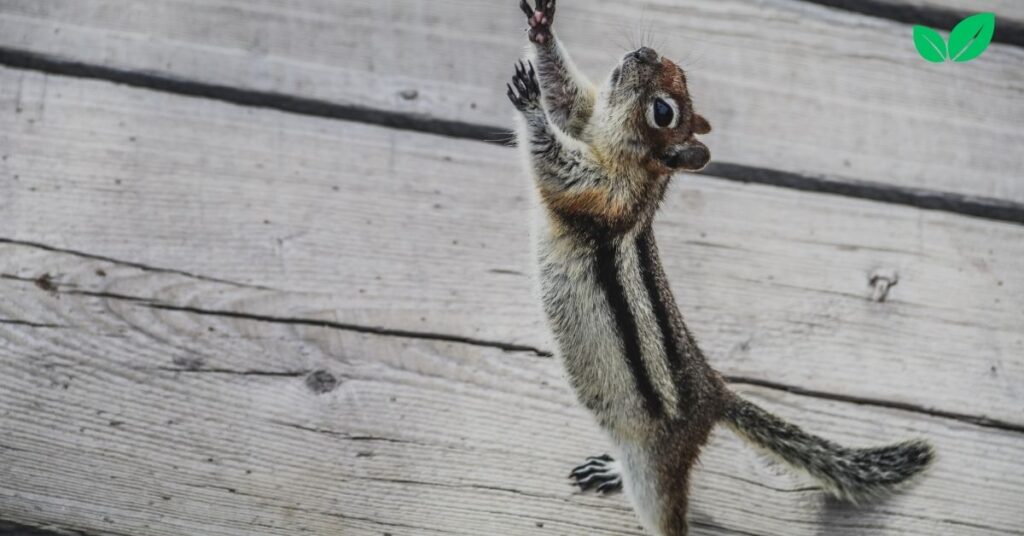
2.1. Nutrient Cycling
Chipmunks, as omnivores, consume a variety of foods, including seeds, nuts, fruits, fungi, and insects. As a result, their droppings contain a mix of organic materials that, when decomposed, contribute nutrients back into the soil. These nutrients—such as nitrogen, phosphorus, and potassium—are essential for plant growth and overall ecosystem health.
2.1.1. Decomposition Process
The decomposition of chipmunk droppings is facilitated by microorganisms such as bacteria and fungi, which break down the organic matter into simpler compounds. This process not only returns nutrients to the soil but also supports a diverse community of soil organisms, including earthworms, insects, and other decomposers.
- Soil Fertility: By contributing organic matter to the soil, chipmunk droppings help maintain soil structure and fertility, which is crucial for healthy plant growth.
- Microbial Activity: The decomposition of droppings encourages microbial activity, which plays an essential role in breaking down organic matter and cycling nutrients through the ecosystem.
2.2. Seed Dispersal
Chipmunks are known for their habit of hoarding seeds and nuts, many of which they bury in shallow caches. Sometimes, these food stores are forgotten or abandoned, allowing the seeds to germinate and grow into new plants. While their caching behavior is a primary method of seed dispersal, chipmunk droppings also contribute to this process.
- Ingestion and Excretion: Chipmunks often consume seeds and fruits that pass through their digestive systems intact. When these seeds are excreted in their droppings, they may still be viable and capable of germination.
- Fertilization: The organic matter in chipmunk droppings can provide a nutrient-rich environment for the germination of seeds, further supporting plant growth and contributing to forest regeneration and biodiversity.
3. Environmental Indicators and Chipmunk Droppings
Chipmunk droppings can serve as environmental indicators, offering clues about local wildlife populations, ecosystem health, and even the presence of certain diseases. Monitoring the frequency and distribution of chipmunk droppings can provide valuable insights into the state of local environments, particularly in areas where chipmunks play a significant ecological role.
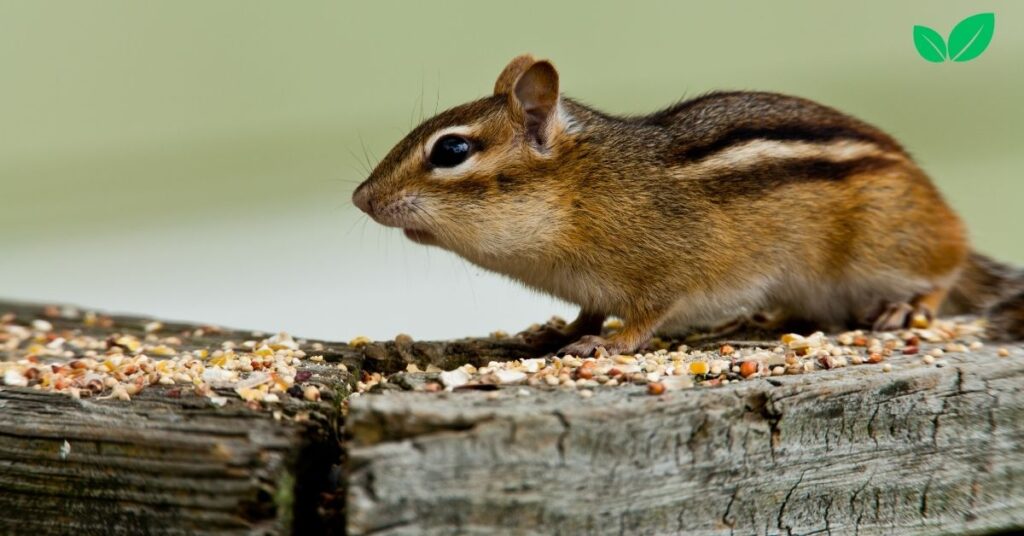
3.1. Indicators of Wildlife Health
The presence of chipmunk droppings in an area can indicate a healthy and active population of small mammals. These droppings, when found in abundance, suggest that chipmunks are successfully foraging and reproducing, contributing to the overall health of the ecosystem.
3.1.1. Food Availability
The distribution and frequency of chipmunk droppings can also provide information about food availability in the area. In regions where food sources are plentiful, such as forests with abundant nut-producing trees, chipmunks are likely to leave more droppings as they forage and cache food.
- Changes in Population Dynamics: A sudden decrease in the number of droppings may indicate a decline in the chipmunk population, which could be linked to habitat loss, food scarcity, or predation.
- Seasonal Variations: The frequency of droppings may vary seasonally, with chipmunks becoming more active in the spring and summer months when food is abundant and less active during the colder months when they retreat to their burrows for hibernation.
3.2. Disease Transmission
While chipmunks play a beneficial role in ecosystems, their droppings can also pose health risks by serving as vectors for certain diseases. Like other small mammals, chipmunks can carry pathogens that can be transmitted through their feces, urine, or direct contact.
3.2.1. Hantavirus and Other Zoonotic Diseases
Chipmunks are known to carry hantavirus, a potentially serious respiratory disease that can be transmitted to humans through contact with infected rodent droppings, urine, or saliva. Although the risk of contracting hantavirus from chipmunk droppings is relatively low compared to other rodents, such as deer mice, it is still important to take precautions when handling or cleaning areas where chipmunk droppings are present.
- Preventive Measures: When cleaning up chipmunk droppings, it is essential to wear gloves, avoid stirring up dust, and disinfect the area with a bleach solution to minimize the risk of exposure to pathogens.
3.2.2. Lyme Disease and Ticks
In addition to diseases transmitted through droppings, chipmunks can also play a role in the transmission of Lyme disease. Chipmunks, like other small mammals, are hosts for black-legged ticks (Ixodes scapularis), which carry the bacteria that cause Lyme disease. While chipmunks do not directly transmit Lyme disease through their droppings, their presence in an area may indicate the potential for increased tick populations.
- Tick Monitoring: Areas with high chipmunk activity, as indicated by the presence of droppings, may also have higher populations of ticks. Monitoring these areas can help identify regions at higher risk for Lyme disease transmission.
4. Managing Chipmunk Populations and Minimizing Environmental Impact
While chipmunks play a beneficial role in ecosystems, their droppings can become a concern in human-inhabited areas, particularly when they accumulate around homes, gardens, or structures. Managing chipmunk populations in a way that minimizes their environmental impact while maintaining their ecological benefits requires a balanced approach.
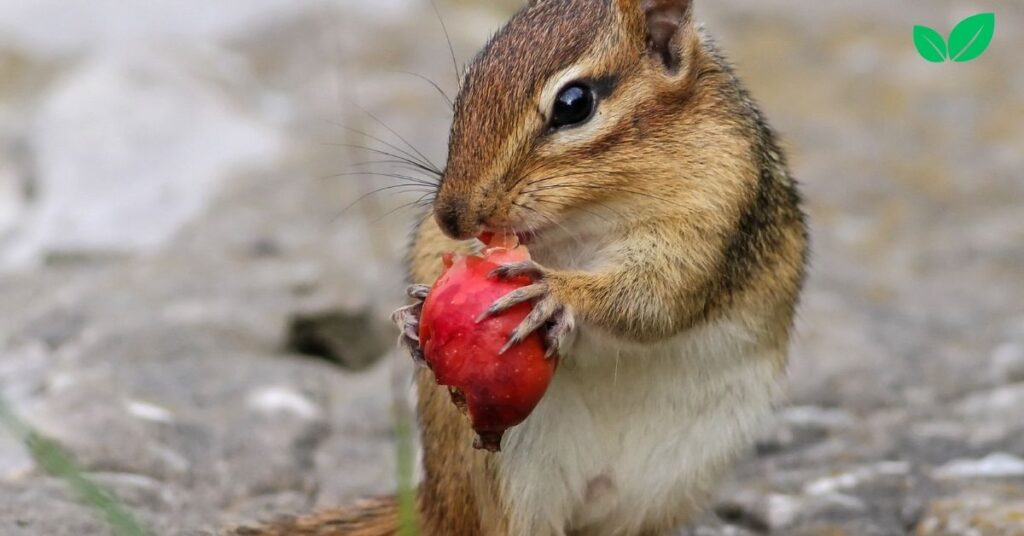
4.1. Habitat Modification
One of the most effective ways to manage chipmunk populations and reduce the accumulation of droppings near human structures is through habitat modification. By making areas less attractive to chipmunks, homeowners can reduce the likelihood of chipmunks nesting or foraging near buildings.
4.1.1. Reducing Food Sources
Chipmunks are attracted to areas with abundant food sources, such as bird feeders, gardens, and compost piles. Limiting access to these food sources can help discourage chipmunks from frequenting certain areas and reduce the accumulation of droppings.
- Secure Bird Feeders: Using squirrel-proof bird feeders or placing feeders far from buildings can reduce the amount of food available to chipmunks.
- Garden Fencing: Installing fences around vegetable gardens can prevent chipmunks from foraging on plants and reduce the amount of droppings left behind.
4.1.2. Sealing Entry Points
Chipmunks may seek shelter in human structures, such as sheds, garages, or attics. Sealing any potential entry points can prevent chipmunks from nesting inside these structures and minimize the risk of droppings accumulating in living or storage spaces.
- Check for Gaps and Holes: Inspect the exterior of buildings for gaps, holes, or cracks that chipmunks could use to gain entry. Seal any openings with materials such as steel wool or caulk to prevent chipmunks from nesting indoors.
- Use Mesh or Wire Barriers: Installing wire mesh around the base of decks, sheds, and other structures can help deter chipmunks from burrowing underneath or creating nests in sheltered areas. This will also reduce the accumulation of droppings in these areas.
4.2. Humane Trapping and Relocation
In cases where chipmunks become a persistent problem near homes or gardens, humane trapping and relocation can be an option for managing the population without causing harm to the animals. However, it’s important to consider the potential environmental impact and legal regulations surrounding wildlife relocation.
4.2.1. Proper Use of Humane Traps
Live traps can be used to capture chipmunks and relocate them to a more suitable habitat away from human-inhabited areas. When using traps, it is essential to check them regularly to avoid leaving animals trapped for extended periods, which can cause stress or harm.
- Trap Placement: Place traps near areas where chipmunks are most active, such as along their burrow entrances or near food sources. Use bait, such as sunflower seeds or peanut butter, to attract them to the trap.
- Relocation Considerations: Relocating chipmunks to a suitable environment at least a few miles away from their original territory is crucial to prevent them from returning. Ensure that the relocation site provides adequate food, shelter, and access to water.
4.2.2. Legal and Ethical Considerations
Before trapping and relocating chipmunks, it is important to check local wildlife laws and regulations. In some regions, relocating wildlife may require a permit, and certain methods of trapping or relocation may be prohibited.
- Minimizing Environmental Disruption: When relocating chipmunks, care should be taken to release them in an environment that is similar to their original habitat. This reduces the likelihood of environmental disruption and ensures that the relocated animals can survive and thrive in their new location.
4.3. Natural Predators and Biological Control
Another way to manage chipmunk populations naturally is by encouraging the presence of their predators, which can help keep the population in check. Many animals, including birds of prey, foxes, and snakes, naturally prey on chipmunks and can help control their numbers without the need for human intervention.
4.3.1. Encouraging Predator Presence
Creating a habitat that is attractive to natural predators can help maintain a balanced chipmunk population in areas where they might otherwise become overabundant.
- Raptor Perches and Nesting Boxes: Birds of prey, such as hawks and owls, are effective chipmunk predators. Installing raptor perches or nesting boxes in the area can encourage these birds to take up residence, helping control the chipmunk population.
- Natural Landscaping: Maintaining natural landscaping features, such as wooded areas or dense shrubs, can provide shelter for predators like foxes and snakes, which will naturally help regulate chipmunk numbers.
4.3.2. Risks of Over-Population
When chipmunk populations grow too large, they can become more destructive, leading to increased damage to gardens, landscapes, and human structures. Overpopulation can also result in greater accumulation of droppings, which may elevate the risk of disease transmission and environmental contamination.
5. The Role of Chipmunks in Biodiversity
Despite their potential as pests in human-inhabited areas, chipmunks play a critical role in maintaining biodiversity within natural ecosystems. They serve as prey for a variety of animals, act as seed dispersers, and contribute to nutrient cycling through their droppings.
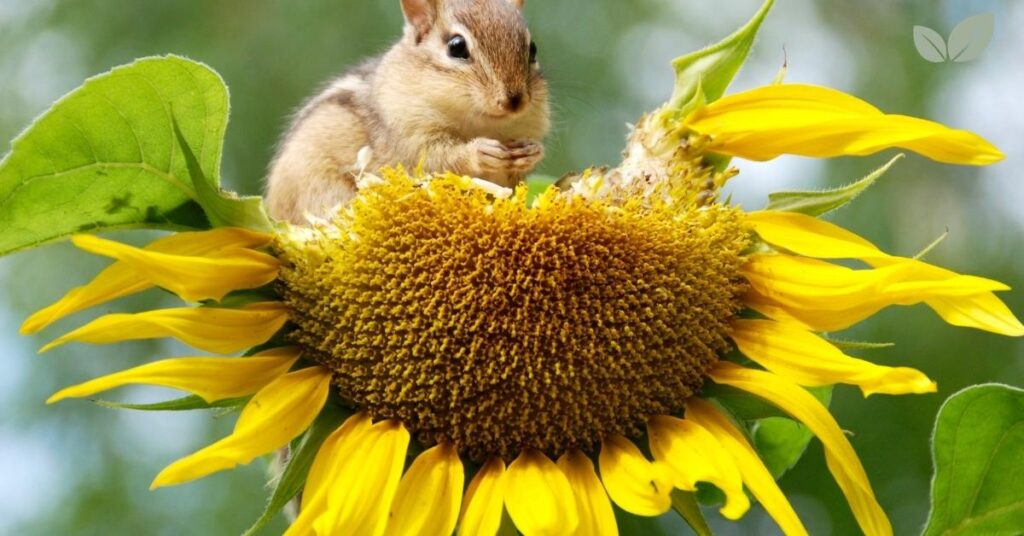
5.1. Seed Dispersal and Forest Regeneration
As mentioned earlier, chipmunks are excellent seed dispersers, contributing to the growth of trees and plants in forested areas. Their hoarding behavior, combined with the seeds found in their droppings, ensures that plant species are spread across the landscape, supporting forest regeneration and ecosystem resilience.
- Keystone Species: In some ecosystems, chipmunks may act as keystone species, meaning that their activities—such as seed dispersal—are crucial to the overall health and functioning of the ecosystem.
- Promoting Plant Diversity: By dispersing seeds from a wide range of plants, chipmunks help promote plant diversity, which in turn supports a variety of wildlife species that depend on different plants for food and shelter.
5.2. Prey Species in the Food Chain
Chipmunks are an important food source for many predators, including birds of prey, snakes, and carnivorous mammals. Their role as prey helps sustain predator populations, contributing to the balance of the food chain within ecosystems.
- Supporting Predator Populations: By maintaining a healthy chipmunk population, ecosystems can support larger predator populations, which helps keep other small mammal species in check and prevents overpopulation.
- Balancing Ecosystem Dynamics: Chipmunks are part of a complex web of interactions within ecosystems, where their presence influences the populations of other species. Understanding their role as both prey and seed dispersers highlights the importance of maintaining balanced chipmunk populations for ecosystem health.
6. Conclusion: The Environmental Importance of Chipmunk Droppings
Chipmunk droppings may seem insignificant at first glance, but they play an important role in ecosystem processes, from nutrient cycling to seed dispersal. While managing chipmunk populations near human dwellings is necessary to reduce risks such as disease transmission and structural damage, it is also important to recognize the valuable ecological functions that chipmunks serve.
By contributing organic matter to the soil, supporting plant growth, and acting as prey for larger predators, chipmunks and their droppings are vital components of healthy, functioning ecosystems. Understanding the environmental role of chipmunk droppings can help inform conservation efforts and promote a balanced approach to managing wildlife populations in both natural and human-modified environments.
7. FAQs About Chipmunk Droppings
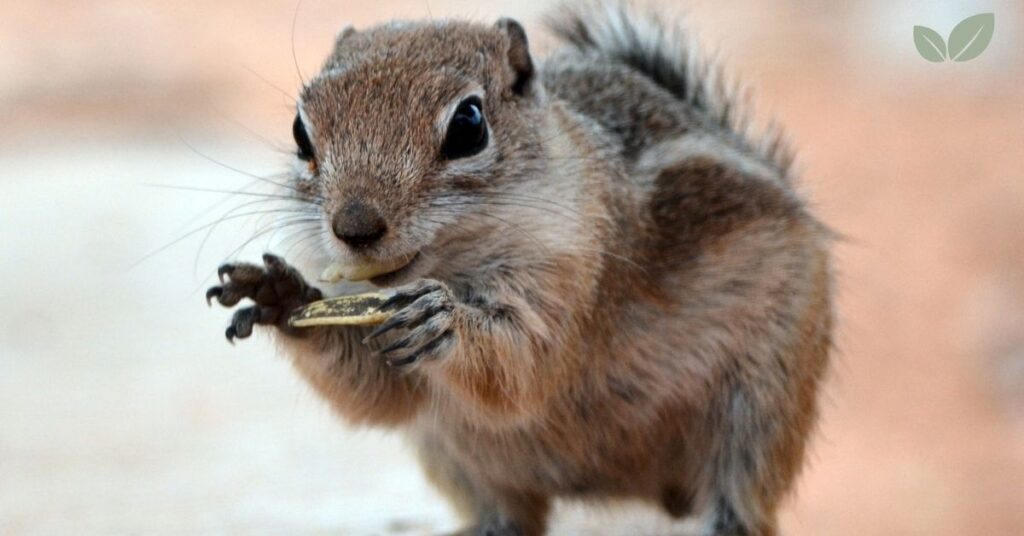
7.1. How can I differentiate chipmunk droppings from mouse droppings?
Chipmunk droppings are similar to mouse droppings in size and shape but tend to be slightly longer and narrower. They are typically darker when fresh and can be found near food sources, burrows, or frequent travel paths.
7.2. Are chipmunk droppings dangerous to humans?
While the risk of contracting diseases from chipmunk droppings is low, they can carry pathogens such as hantavirus. It’s important to handle droppings with care and take precautions when cleaning areas where chipmunks have been active.
7.3. How do chipmunk droppings benefit the environment?
Chipmunk droppings contribute to nutrient cycling, providing essential nutrients for plants and promoting soil health. They also play a role in seed dispersal, supporting forest regeneration and biodiversity.
7.4. How can I manage chipmunk populations in my yard?
To reduce chipmunk activity near your home, you can modify their habitat by limiting access to food sources, sealing entry points to structures, and using humane traps for relocation if necessary.
7.5. What diseases can be spread through chipmunk droppings?
Chipmunks can carry hantavirus, which can be transmitted to humans through droppings, urine, or saliva. It’s important to take precautions when handling or cleaning areas where chipmunk droppings are found.
7.6. Do chipmunks contribute to forest growth?
Yes, chipmunks contribute to forest growth by dispersing seeds through their droppings and caching behavior. This supports forest regeneration and helps maintain plant diversity within ecosystems.

